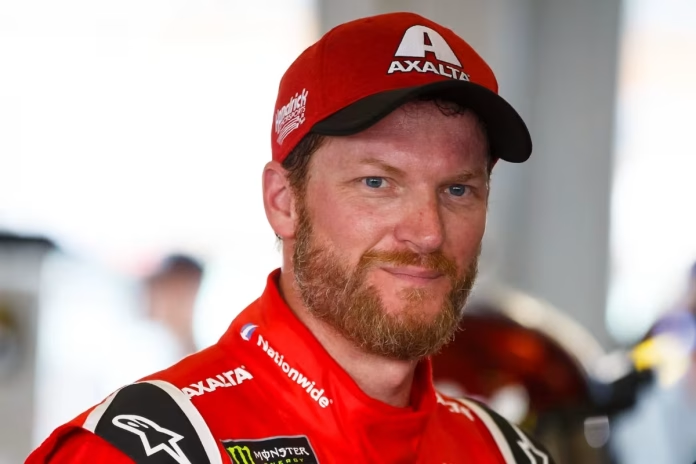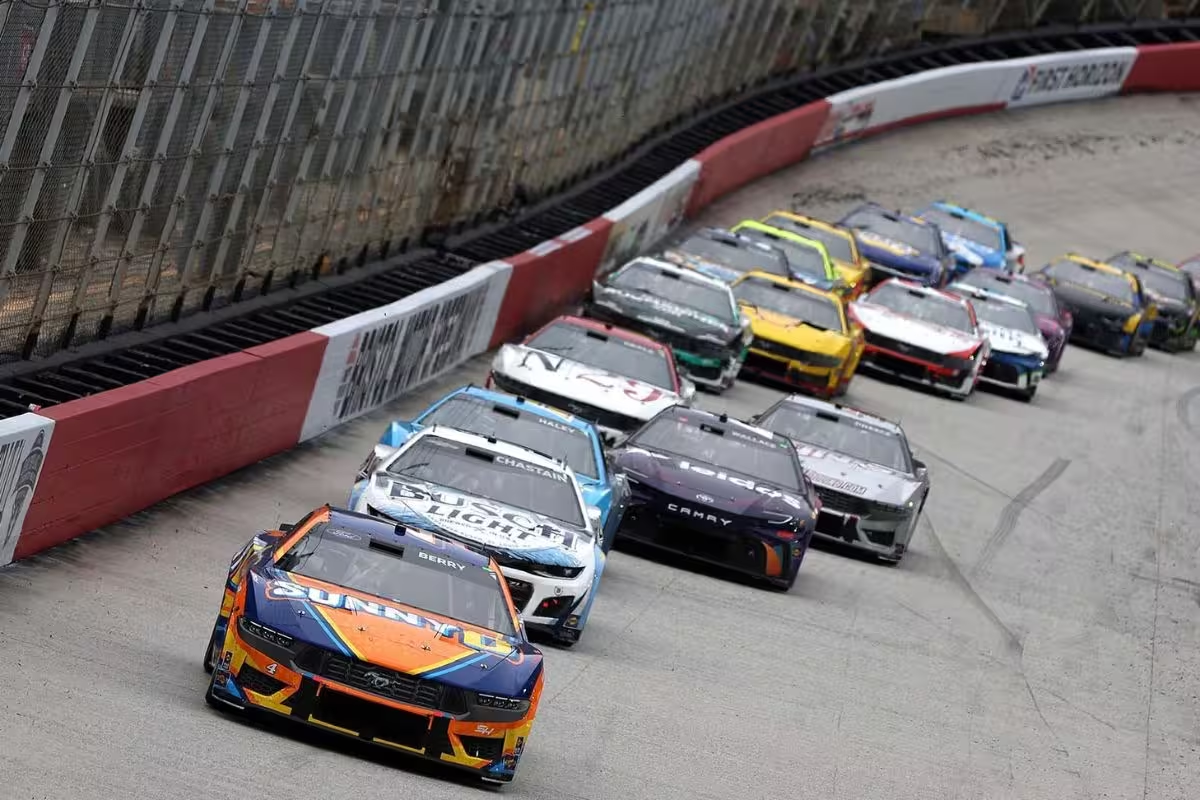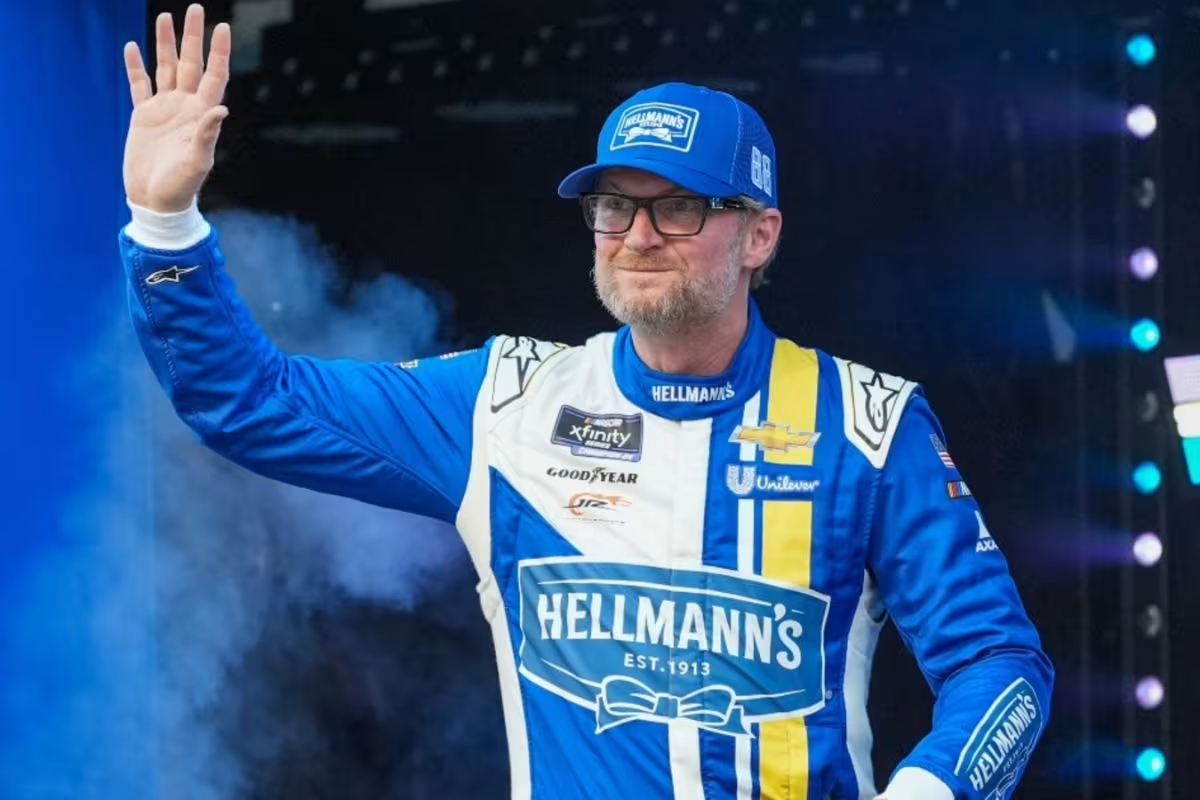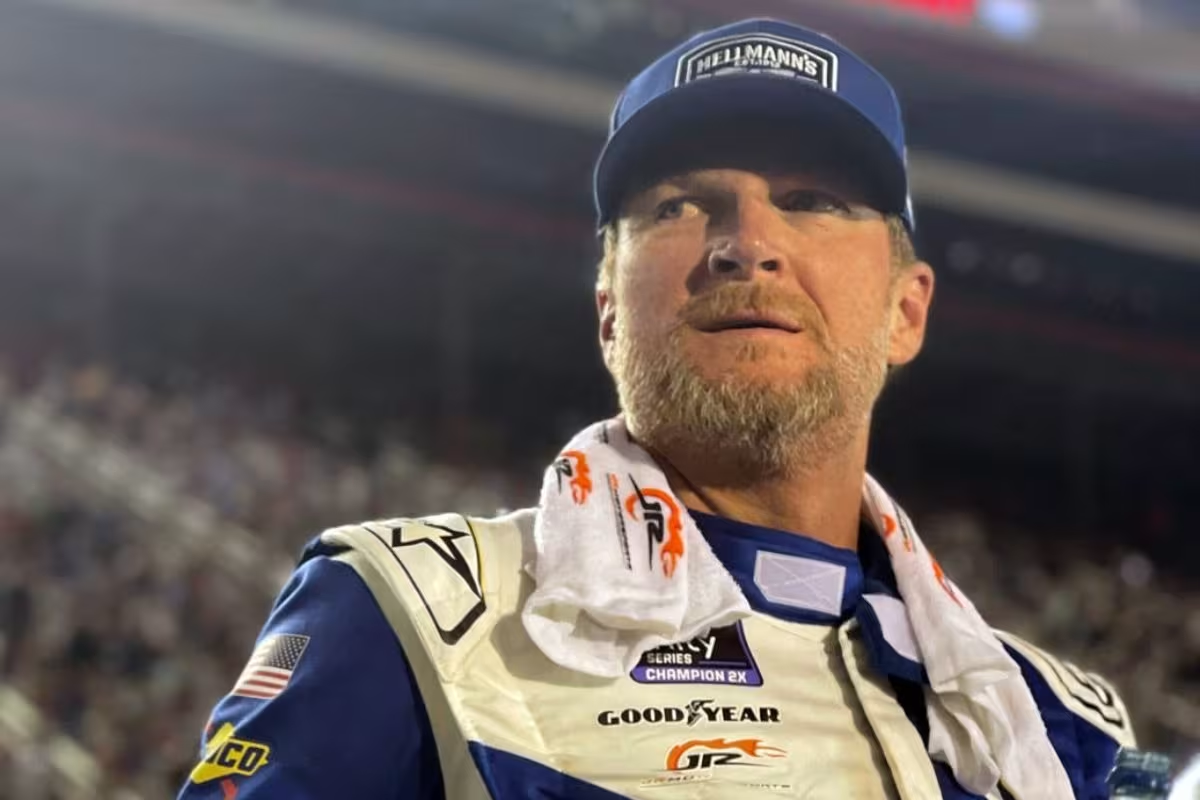Dale Jr. Slams NASCAR Fans’ Obsession: Dale Earnhardt Jr.’s recent critique of NASCAR fans’ intense focus on specific elements of the sport raises significant questions about the implications of such obsessions. He argues that this narrow viewpoint may stifle innovation and hinder the sport’s growth, particularly in areas such as tire design and race strategy, which are essential for maintaining competitiveness. As he highlights concerns about a dwindling fanbase, the broader implications for NASCAR’s future warrant careful consideration. What changes might be necessary to realign fan enthusiasm with the sport’s evolving landscape?
Key Highlights
- Dale Earnhardt Jr. criticizes fans’ fixation on tire performance, which overshadows broader issues affecting NASCAR’s competitive landscape.
- He advocates for innovative tire designs to enhance racing excitement and improve fan engagement.
- Earnhardt Jr. expresses concern over declining fan satisfaction and engagement, emphasizing the need for change to retain attendees.
- The contrast between the excitement of Xfinity races and dull Cup Series events highlights the urgency for NASCAR to adapt.
- He calls for NASCAR leadership to proactively address fan retention challenges rather than remain stagnant in their approach.
Current State of NASCAR and Tire Issues
In the wake of recent challenges, NASCAR finds itself at a critical juncture regarding tire management and performance. This pivotal issue became glaringly clear during the spring race in Bristol, where the 0.533-mile track presented a formidable challenge to tire durability. The notorious surface consumed Goodyear’s tires at an alarming rate, leading to multiple blowouts within the initial 40 laps. This scenario not only tested the limits of tire technology but also highlighted the importance of effective tire management strategies among drivers.
The subsequent release of a new tire compound brought renewed excitement, transforming the race into a dynamic contest of skill and strategy. Drivers were compelled to navigate the fine line between speed and tire conservation, resulting in an intense spectacle that captivated both participants and spectators alike.
However, this success appears to have been short-lived, as concerns about tire performance have resurfaced, prompting skepticism from industry experts, including former driver Dale Earnhardt Jr.
NASCAR’s current state necessitates a reevaluation of its tire management practices. The sport must address the balance between performance and durability to guarantee that races remain competitive and engaging.
As NASCAR navigates this critical phase, the focus on tire quality and management is imperative not only for maintaining the integrity of the races but also for safeguarding the sport’s reputation among its dedicated fanbase. Without decisive action, NASCAR risks undermining the thrilling experience that has long defined its identity.
Recent Race Performance and Concerns
Recent race performances have raised considerable concerns among fans and industry experts alike, particularly regarding the lack of competitive excitement exhibited in key events. The All-Star race, described by many as a “snoozer,” exemplified the troubling trend of diminished on-track action. Importantly, races at Richmond and Watkins Glen showed minimal tire falloff, further dampening the competitive spirit. Bristol, a track traditionally known for its unpredictability, displayed a clear contrast between its spring and fall events; the latter featured only eight lead changes, a major drop from the 58 lead changes seen earlier in the year.
The implementation of resin and PJ1 traction compound at Bristol was a desperate attempt to restore the racing dynamic, yet the results were described as “baffling.” Kyle Larson’s dominance, leading 462 of 500 laps, left many fans disheartened, as reflected in Jeff Gluck’s poll, which indicated widespread dissatisfaction. Dale Earnhardt Jr. has voiced his concerns about the state of racing at Bristol, warning track owner Marcus Smith of the potential long-term implications.
| Race Event | Lead Changes | Fan Satisfaction (%) |
|---|---|---|
| All-Star Race | 1 | 30 |
| Richmond | 5 | 45 |
| Watkins Glen | 4 | 40 |
| Bristol Spring | 58 | 85 |
| Bristol Fall | 8 | 25 |
The clear contrast in these metrics highlights a growing crisis that threatens the very essence of NASCAR’s competitive narrative.
Dale Earnhardt Jr.’s Suggestions
Dale Earnhardt Jr. has emerged as a vocal advocate for change within NASCAR, particularly in response to the concerning trends observed in recent races.
During a recent episode of The Dale Jr. Download, he proposed creative alterations to tire specifications that could improve the racing experience and enhance driver safety. Earnhardt suggested the introduction of a narrower tire, which would not necessitate modifications to existing brake systems or clearance configurations. This approach presents a straightforward solution to some of the current performance issues without extensive redesign.
“We bounce back and forth between where we put the blame every time we have one of these bad races oh it’s the tire, and then the next week it’s a car thing. Like you know, Denny (Hamlin) made the case this week on his show that it’s the car. And so no one’s wrong. But I’m gonna say this that race car is a sports car. That is a sports car running ovals.”-(dale jr.)
Furthermore, Earnhardt advocated for the implementation of a treaded tire that would maintain compatibility with the current wheel structure. He emphasized that this grooved tire design would reduce the amount of rubber on the track, potentially leading to better handling and increased competitiveness.
However, he also acknowledged the challenges associated with this concept, particularly the risk of tire chunking and failure during high-pressure racing conditions.
Earnhardt Jr.’s Concerns for the Future
While expressing his concerns for the future of NASCAR, Earnhardt Jr. highlighted the alarming trend of dwindling fan engagement, which he believes could jeopardize the sport’s viability. His apprehension is emphasized by the troubling statistic of a 27.2% favorable poll, a figure that highlights the disconnect between NASCAR and its audience.
“It’s going to probably require a narrow tire like a lot more narrow yes you got to take a lot of rubber off the racetrack and you got to pull all the underbody off the car. But is that even realistic? Are those changes real changes that can be made? They’ve invested and put so much into this thing,”-(dale jr.)
In a candid conversation with Marcus Smith, CEO of Speedway Motorsports, Earnhardt Jr. implored the leadership to take proactive measures before the situation deteriorates further. He questioned how ticket sales could be sustained if the current path continues, emphasizing the urgent need for tactical intervention.
Earnhardt Jr. noted that while his observations may not be groundbreaking, the situation is critical. He expressed a sense of despair at the apparent stagnation in addressing these challenges.
The contrasting experiences of the Bristol Cup Series and the Xfinity race serve as a microcosm of the larger issue; the former’s perceived dullness poses a direct threat to fan retention, while the latter exemplifies the excitement that can invigorate interest.
This dichotomy highlights the necessity for NASCAR to recalibrate its offerings to recapture a fading fanbase. Earnhardt Jr.’s concerns reflect a broader sentiment within the racing community, urging stakeholders to recognize and respond to the shifting dynamics of audience engagement.
Without decisive action, the sport risks further alienating its core supporters, ultimately endangering its long-term sustainability.
Kyle Larson and Kenny Wallace Jump into the debate
Kyle Larson, the recent Bristol winner, has added his voice to the ongoing debate about tire performance versus car design. The Hendrick Motorsports driver reflected on his experiences before the introduction of the next-gen car, asserting that passing at Bristol has always been a challenge, but it was easier in the past.
“From what I remember in my career before the Next Gen car was we had cars with some disparity that could run closer to one another in traffic and a wheel/tire combo that got hotter which in essences gave us less grip on the long run. I’ve ran with 900hp all the way down to 650hp or less potentially, high downforce, low downforce and everything in between.”-(larson)
While Larson suggests that the introduction of parity may have compromised race quality, veteran driver Kenny Wallace offers a different perspective.
“Here’s the way I look at it. We have raced all year long and the races have been fantastic. We have one bad race at Bristol and all of a sudden, ‘Let’s get rid of the car!’” -(kenny)
News in Brief: Dale Jr. Slams NASCAR Fans’ Obsession
The critique by Dale Earnhardt Jr. highlights important issues within NASCAR, particularly the narrow focus of fans on certain elements that may detract from the sport’s general vibrancy. The advocacy for creative tire designs and tactical adjustments reflects a pressing need for evolution in racing dynamics. Without addressing these concerns, NASCAR risks alienating dedicated supporters and compromising its future sustainability. A broader perspective is crucial to rejuvenate interest and maintain the competitive spirit that defines the sport.
ALSO READ: Dale Jr. Teams up With 400 Million Dollar Sponsor makes NASCAR Fans Excited!





